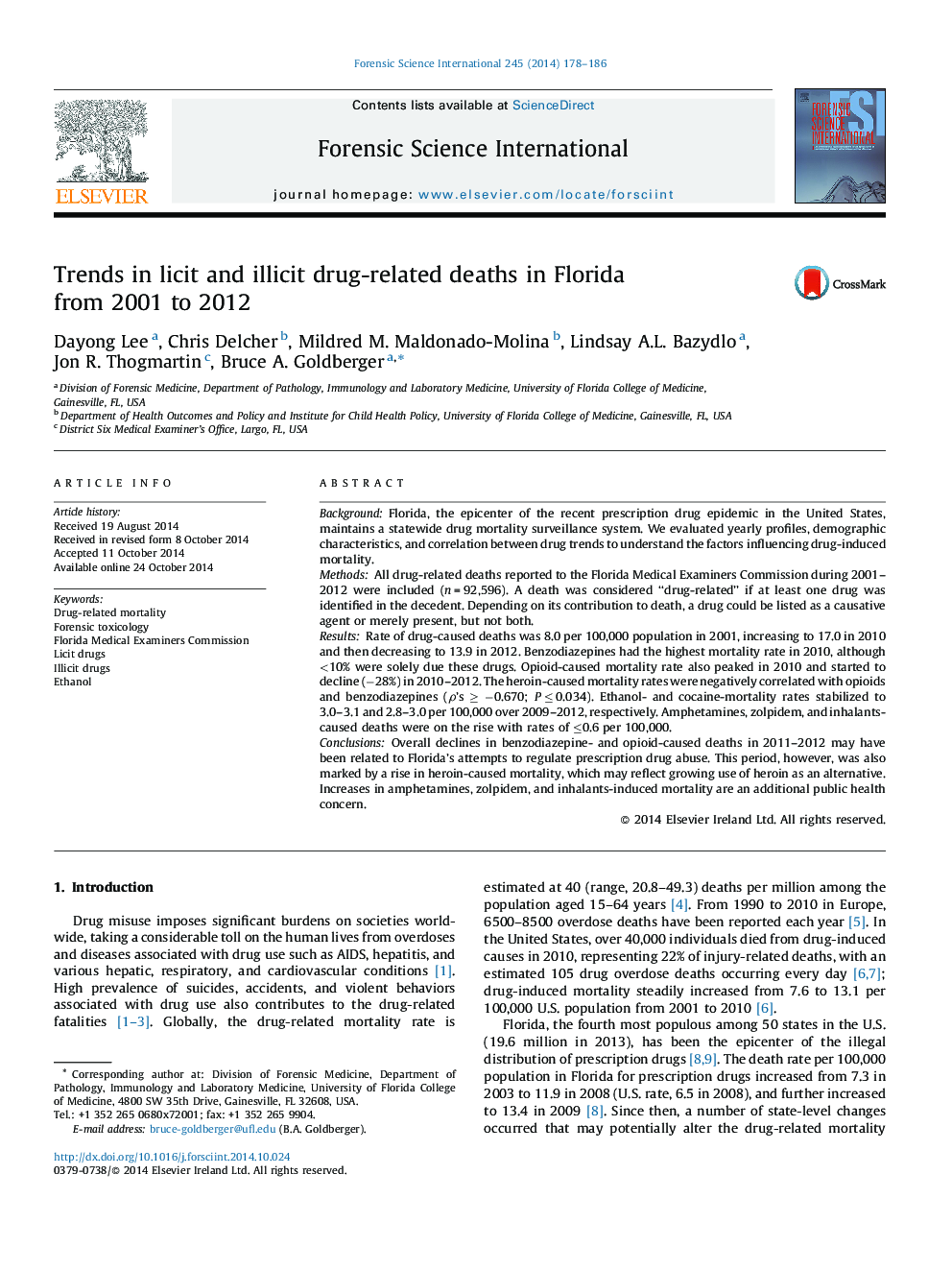| Article ID | Journal | Published Year | Pages | File Type |
|---|---|---|---|---|
| 95661 | Forensic Science International | 2014 | 9 Pages |
•Florida drug-related mortality was evaluated by time trends, demographics, and correlations.•The majority of drug-caused deaths were accidental and the half involved polydrug use.•Overall decline was observed in benzodiazepines- and opioids-caused deaths in 2011–2012.•Heroin-caused mortality concurrently increased, along with morphine and hydromorphone.•Increased mortality rates of amphetamines, zolpidem, and inhalants were of additional concern.
BackgroundFlorida, the epicenter of the recent prescription drug epidemic in the United States, maintains a statewide drug mortality surveillance system. We evaluated yearly profiles, demographic characteristics, and correlation between drug trends to understand the factors influencing drug-induced mortality.MethodsAll drug-related deaths reported to the Florida Medical Examiners Commission during 2001–2012 were included (n = 92,596). A death was considered “drug-related” if at least one drug was identified in the decedent. Depending on its contribution to death, a drug could be listed as a causative agent or merely present, but not both.ResultsRate of drug-caused deaths was 8.0 per 100,000 population in 2001, increasing to 17.0 in 2010 and then decreasing to 13.9 in 2012. Benzodiazepines had the highest mortality rate in 2010, although <10% were solely due these drugs. Opioid-caused mortality rate also peaked in 2010 and started to decline (−28%) in 2010–2012. The heroin-caused mortality rates were negatively correlated with opioids and benzodiazepines (ρ’s ≥ −0.670; P ≤ 0.034). Ethanol- and cocaine-mortality rates stabilized to 3.0–3.1 and 2.8–3.0 per 100,000 over 2009–2012, respectively. Amphetamines, zolpidem, and inhalants-caused deaths were on the rise with rates of ≤0.6 per 100,000.ConclusionsOverall declines in benzodiazepine- and opioid-caused deaths in 2011–2012 may have been related to Florida's attempts to regulate prescription drug abuse. This period, however, was also marked by a rise in heroin-caused mortality, which may reflect growing use of heroin as an alternative. Increases in amphetamines, zolpidem, and inhalants-induced mortality are an additional public health concern.
